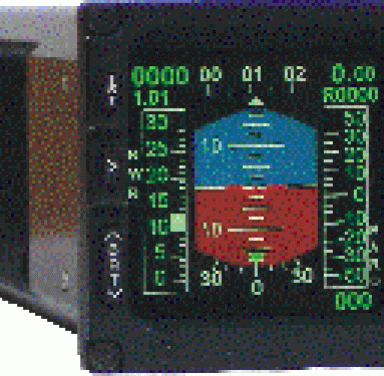
Avionics
Open Architecture Computer (OAC) designed and developed by ADA, combines the functions of earlier mission computer, display processor, video switching unit and mission preparation and retrieval unit. Besides, it caters to digital maps. It is designed based on open system interfaces standards, which provides interoperability, scalability, and portability.OAC drives three multi-function displays, HUD and also has provision to drive helmet-mounted display. In addition, it caters to drive-trainer display surfaces, including recording. The above features and its MIL-STD-1553B interface make it compatible to other aircraft. An OAC development rig has also been designed and developed to cater for all functional and interface checks of OAC. It has the flexibility to integrate actual LRUs, or respective software models. The software development is in accordance with IEEE 12207 standard.
Salient Features
- Indigenously developed using COTS products
- Scalable and upgradable
- Having a layered architecture
- Design supports hardware evolution and sustains hardware obsolescence
- Uses state-of-the-art methodology for software development cycle
Multi-Function Upfront Control Panel
Multi-Function Upfront Control Panel is an indigenously developed man-machine interface unit. It combines functions of earlier multi-function keyboard (MFK), multi-function rotary (MFR) switch and upfront controls, and helps the pilot to input data into the aircraft systems with the help of a monochrome LCD display and a keyboard. A simple interface RS422 makes it compatible to other aircraft also.
Salient Features
- Has a smart editor, with double click provision, which reduces pilot workload
- Coherent information presentation
- Easy-to-handle keyboard
- Hot-key provision, for quick selections
- State-of-the-art software methodology, which makes the application reusable, maintainable and reliable
Pylon Interface Box
Pylon Interface Box (PIB) is a part of Stores Management System (SMS) for Tejas. SMS integrates stores using weapon bus and provides interface to cockpit through OAC. SMS design caters for easy integration of indigenous, Russian, Western and 1760C stores on aircraft with only minor software upgradation.
Salient Features
- Enables stores recognition, target acquisition and tracking, stores selection, arming fusing and release
- Provides direct control to MIL-STD-1760C, Indian, Russian, and Western stores
- Compact intelligent MIL-STD-1553B remote terminal (RT) with dual redundant processor architecture using high level language
Stores Interface Box
Like PIB, Stores Interface Box (SIB) is also a part of SMS for Tejas. SIB integrates stores using weapon bus and provides interface to cockpit through OAC. It has four weapon management computers to ensure operational readiness assessment of each weapon, dynamic power management of SMS, and aircraft balancing during release of stores. SMS design caters for easy integration of indigenous, Russian, Western and 1760C stores on aircraft with only minor software upgradation.
Salient Features
- VME-based open system hardware architecture with inbuilt redundancy
- Microcontroller-based I/O processor with 128 I/O, 3-node MIL-STD-1553B and four channel RS 422 interface
- Inbuilt safety interlocks for release and emergency jettison of stores
Smart Standby Display Unit
Smart Standby Display Unit (SSDU) is an indigenously developed colour AMLCD-based, 3ATI size, cockpit display and provides flight and navigation information in a colour graphical format. SSDU generates and displays page information as predefined pages based on the parameters received through it's digital and analog interfaces.
Salient Features
- Active matrix colour LCD-based smart display of 3- (W) x 3- (H) x 9- (D)
- Direct sunlight readable and fully compatible with night vision goggles.
- Display with wide viewing angle
- Both power on self test (POST) and initiated test
- Continuous built-in test (BIT) and fault logging for maintenance
- Pin programmable and the same part number can be configured for different display instruments or as repeater



